Reintroducing Familiar Foods Back on Your Baby's Plate
- When you're introducing allergenic foods, the key is to do it early and often. This helps lower food allergy risk down the road.
- If you're introducing 1 new food per day, you can spend the first 10 minutes of a 20-minute meal letting baby explore the new food on its own.
- For the 2nd 10 minutes of the meal try to swap in a plate with 3 foods on it: 1 new food from that day with 2 familiar foods from previous days.
- ezpz plates and bowls mentioned are from ezpzfun.com & discount code is KATIE10 for 10% off

LISTEN TO THIS EPISODE
Episode Description
When your baby is trying one new food per day is that the only food the baby eats? It could be but you can also reintroduce familiar foods from previous days. This helps your baby see foods he or she has already tried early and often.
In this episode I’m sharing some easy ways you can reintroduce foods your baby has already tried back into the diet. Yes you can continue to try new foods while also continuing to expose your baby to foods he or she has previously tried!
Links from this Episode
- ezpz plates and bowls mentioned are from ezpzfun.com & discount code is BABYLED for 15% off
- Tiny Bowl (5 oz) is here
- Mini Bowl (8 oz) is here
- Mini Mat is here
- Baby-Led Weaning with Katie Ferraro program with the 100 First Foods™ Daily Meal Plan, join here: https://babyledweaning.co/program
- Baby-Led Weaning for Beginners free online workshop with 100 First Foods™ list to all attendees, register here: https://babyledweaning.co/baby-led-weaning-for-beginners
Other Episodes Related to this Topic
- Episode 45 - How to Balance Your Baby’s BLW Plate is here

Latest Episodes
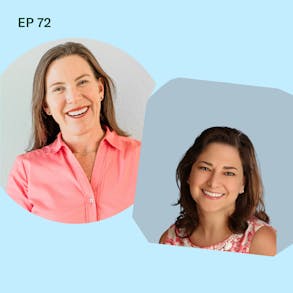
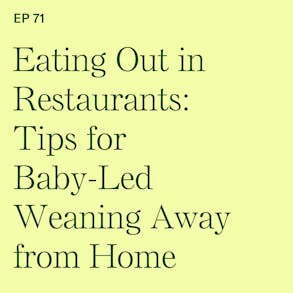
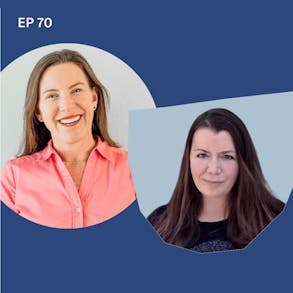
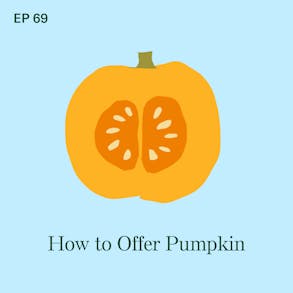
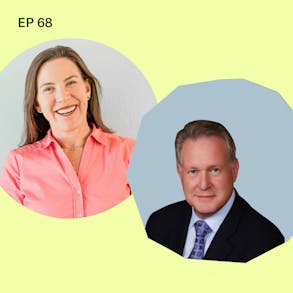
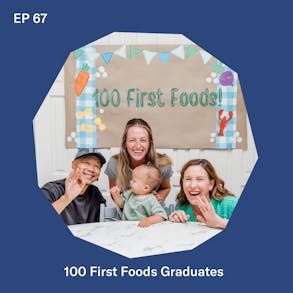
Katie Ferraro (0s):
So let's say your typical baby feeding takes 20 minutes. I would use the first half of the meal, the first 10 minutes to introduce the new food of the day on its own. And then in the second 10 minutes, I would bring in a plate that has three foods on it. The new food of the day, plus two familiar foods from previous days. Hey, there I'm Katie Ferraro, registered dietician, college nutrition professor, and mom of seven specializing in baby-led weaning here on the Baby-Led Weaning Made Easy podcast. I help you strip out all of the noise and nonsense about feeding, leaving you with the competence and knowledge. You need to give your baby a safe start to solid foods using baby-led weaning.
Katie Ferraro (42s):
Hey guys, welcome back today. We're talking to about how to reintroduce familiar foods back onto your baby's plate. Cause maybe you've heard the recommendation to offer your baby a variety of foods early and often. So the early thing means you wait till your baby is six months of age, plus show any other signs of readiness to eat. But the often part people are like, well, I mean, we tried mushrooms once or sardines once does that count now definitely counts. Every food experience is an opportunity for your baby to learn more about how to eat. But especially with the allergenic foods, it's not just a situation of one and done where you offer shellfish one time and you're like, yep, knock that one off the list we're done. We need to do it early and often in order to help prevent food allergy.
Katie Ferraro (1m 25s):
Now what about all the other foods that are not allergenic? We still want to be reintroducing them to our babies. So the point of today's episode is to show you how to set up a pattern so that you're continuing to reintroduce these familiar foods back onto your baby's plate. And that way you're fulfilling this recommendation of getting your baby, that important diet diversity, doing it early and doing it often. So for those of you who are doing the hundred first foods approach to solid foods, back in 2016, I created the whole hundred first foods program as a way to get babies that all important diet diversity and the goal is to have your baby try a hundred different foods before they turn one. Now this is a program that have been refining over the years and lots and lots of parents.
Katie Ferraro (2m 5s):
I see, okay, I'm doing your a hundred first foods approach. And I'm confused if you're doing one new food a day and five new foods a week, it's basically 20 foods a month. And then in five months, your baby's tried a hundred foods. It's the one new food that you do. The only food that, that baby eats that day. And the answer is no, because starting at around six, seven months of age, when you just are getting going with baby-led weaning, we like to see the baby eating one to two times a day at eight to nine months, you can bump that up to two to three times. And then by 10 months of age, it's great to see your baby eating at least three times a day. If that's how the rest of your family eats. So are you just doing the one new food three times a day at 10 months of age? No, no, no, certainly not. Here's the way I do it now again, there's no wrong way to do this is just guidance.
Katie Ferraro (2m 46s):
If you're trying to think, well, how would I structure my baby's meal? Let's say your baby is six and a half months old. You're trying one new food a day. If you're following the hundred first foods approach, we do five new foods a week, a new fruit on Monday, a new vegetable on Tuesday, a new starch on Wednesday, a new protein food on Thursday, and then finally a food from the challenge category on Friday. And the challenge category has the big eight allergenic foods plus sesame, some of the trickier textures and more complex flavor profile foods to babies don't always get to eat, but they can. So let's say you're on day three of the week. So it's a starchy food. And let's say you're doing a whole grain like farro. If farro were the new food of the day, what we generally say is a baby can sit most babies for about 20 minutes in a chair with your observance during a mealtime.
Katie Ferraro (3m 32s):
Nope. Some parents like I'm sitting here for an hour to get the baby to eat. No, no, no, no, no. Most babies you do not need to sit in the chair for an hour. Some babies can and want to, but that's certainly the exception and not the rule and other families are like, dude, I can only sit in this chair for two minutes with this baby. That's probably not long enough either. So again, a good one rule of thumb, about 20 minutes for a feeding. And over that 20 minute period, what I like to do is split the feeding into two 10 minute segments for the first 10 minutes. I will give the baby the new food of the day by itself. So if it's farro, I might Faros for six months old, this might've been a bad example because a baby needs to have their pincer grasp in order to pick up farro, let's say you made the farro into a risotto with a low sodium broth and it was something that was a little thicker and your baby pick it up and eat it.
Katie Ferraro (4m 14s):
Okay. So you've got this like farro groton going on with whatever else is in it. It might be a familiar food. Your baby's had previously, you might do it by itself. The point is I'll spend the first 10 minutes of the meal, introducing the baby to that new food. Let them explore it on their own. Try not to talk, try not to interfere. Just sit there, observe your baby, make sure they're safe, but give them the opportunity to explore that food for about 10 minutes. And I'll just put that single food in a bowl by itself. I use the suction bowls from ezpz, their company that makes the original silicone suction mats and bowls. And when the bowl is suction to the table, then the baby can kind of scoop or rake the food up and out on their own. So do that for 10 minutes. And then what we'll do for the second 10 minutes of the meal is all swap in a more traditional plate, a plate.
Katie Ferraro (4m 59s):
I like the three compartment plates. There's one from ezpz called the mini matte and it has two smaller portions, two, two ounce portions, and then a larger portion of four ounce portion. It's kind of shaped like a smiley face. So in that mat, what I'll put is the new food from that day. So farro again, even though we just started farro 10 minutes ago, second, 10 minutes here comes a plate with farro on it. And then two familiar foods from previous days. So maybe we did starfruit yesterday and we did shrimp the day before I would do the new food of the day and then two foods at the baby seen in previous days. It doesn't have to be just from the day before, just so long. As you know, let's say you're making a bunch of sweet potatoes or you making a bunch of, or not squash.
Katie Ferraro (5m 39s):
If you've got it on hand, certainly don't let it go to waste cycle it back into your baby's meals. So for the second 10 minutes of the meal, the baby would then have a traditional plate again, with three foods on it. We generally don't do more than three foods. That can be very overwhelming to baby in the way I like to structure the plate as I do a serving size of carbohydrate. So if we're about the mini mat and it looks like a smile in the mouth portion, which is four ounces, you don't fill it all the way up, but I would put the larger portion would certainly be the carbohydrate because babies need the energy from carbohydrate to fuel their rapidly growing bodies. Then I'll do a small portion of protein. And in the third pocket, I'll put a small portion of either fruit or vegetable. Now I did a whole separate episode on how to balance your baby's BLW plate and explaining the differences in where those foods are put on the plate.
Katie Ferraro (6m 25s):
If you go back to episode 45, again, it's called How to Balance Your Baby's BLW Plate. That has more information about the distribution of the foods, but back to the rotation, if you do that each day, five days a week, you're introducing a new food. The first 10 minutes of the meal is the new food. The second 10 minutes would be a plate with that new food. And then two familiar foods from previous day. Now that's one feeding. Let's say that you're doing a second feeding you'll can do the same exact plate if you want to the new food of the day farro, and then the star fruit in the shrimp in there, or other familiar foods from previous days that you might have on hand, but it's a good idea to continue exposing your baby to the foods that they've seen previously so that they become familiar with those foods.
Katie Ferraro (7m 6s):
But at the same time, you're moving forward in trying new foods. So it's a pretty basic approach goal being try new foods every day, but continue to offer familiar foods from before. I think numbers wise feeding your baby one to two times a day at six to seven months, two to three times at eight to nine months by 10 months of age, bump that up to three feeds a day. Most babies can eat for about 15 to 20 minutes. If you do a 20 minute feed, split it in half first, 10 minutes, try the new food of the day. Second, 10 minutes swap in a plate with the new food and then two familiar foods. From previous days, those plates that I was mentioning there, the suction mats and bowls, they're from a company called ezpz. If you go to the website, ezpzfun.com. You can use my code, KATIE10 to get 10% off, can check out some of the different sizes.
Katie Ferraro (7m 48s):
But I particularly liked for trying new foods, their product called the tiny bowl. That's a five ounce portion and the mini bowl. It's an eight ounce portion. Again, you don't fill the whole thing up with food. You fill it about a third or a half, give the baby some space to kind of move their hand around and get that food up and out. But having that suction of the matte or the bowl really helps facilitate independent feedings are not, they're not smushing or swiping the food all over the tray or the table and getting frustrated and not able to eat it. And then the mat or the plate that I liked from ezpz, it's called the mini mat. That's the one that shaped like a smile. They have an original mat called the happy mat. It's much bigger. I don't like that as much for baby-led weaning. The mini mat is the plate that has more appropriate portion pockets for babies.
Katie Ferraro (8m 29s):
Again, those are all at ezpzfun.com. If you use my code KATIE10, that is an affiliate code, but if you go to ezpzfun.com, you can find all of those products and just get in the habit of re-introducing those familiar foods back onto your babies. Bye now.

The Program Baby-Led Weaning with Katie Ferraro
A step-by-step digital program for starting solid foods safely and navigating the original 100 FIRST FOODS™ meal plan with baby-led weaning.
 EXPERT-LED, PROVEN APPROACH TO EATING REAL FOOD
EXPERT-LED, PROVEN APPROACH TO EATING REAL FOOD CONCISE VIDEO TRAININGS TO MASTER BABY-LED WEANING
CONCISE VIDEO TRAININGS TO MASTER BABY-LED WEANING 100 FIRST FOODS DAILY MEAL PLAN WITH FOOD PREP VIDEOS
100 FIRST FOODS DAILY MEAL PLAN WITH FOOD PREP VIDEOS
Baby-Led Weaning for Beginners Free Workshop
Is your baby ready to start solid foods, but you’re not sure where to start? Get ready to give your baby a solid foundation to a lifetime of loving real food…even if you’re feeling overwhelmed or confused about this next stage of infant feeding.
Get baby-led weaning recipes and tips delivered to your email inbox.

